Bamboo is a grass that spreads quickly and is native to many parts of the world, including Asia, South America, and Africa. It has been utilized for a long time for a number of purposes, such as construction, food, and medicine. Because of its toughness, versatility, and longevity, bamboo is a common building material in many cultures around the world. Bamboo is y a cost-effective replacement for conventional building materials like concrete and steel and an eco-friendly building material. Bamboo construction is 20–30% less expensive than conventional building techniques, which makes it a viable choice for individuals on a tight budget. From traditional Asian-inspired residences to contemporary, minimalist buildings, bamboo designs can be employed to produce a broad variety of styles. Bamboo is a flexible and adaptable material for walls, roofs, and flooring since it can be shaped into a variety of patterns and shapes. Bamboo can be applied to a variety of construction tasks and building styles.
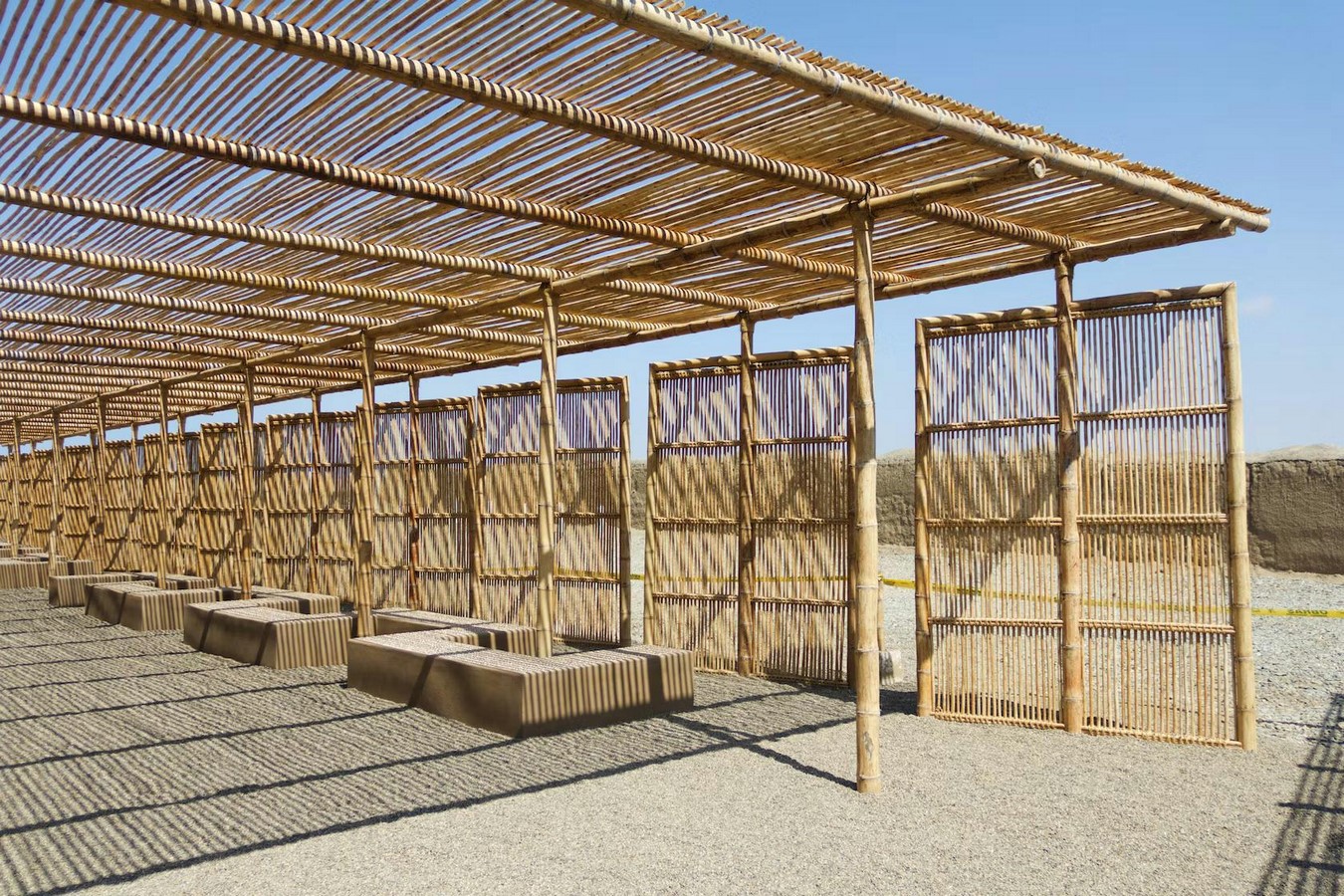
Almost every component of building and home decor, including the poles that support ceilings or roofs as well as the components of walls and floors, can be made of bamboo. Bamboo can be utilized in a variety of industrial applications in place of wood, helping to maintain and restore the world’s forests. For instance, bamboo panels and boards are abrasion-resistant and have a high degree of toughness, making them suitable substitutes for more expensive hardwood goods in the construction industry. Beams and trusses made of bamboo are another option. The combination of bamboo and cement may reinforce concrete projects and has enormous promise for the mass manufacture of affordable dwellings or as an exceptional building material for structures that can survive earthquakes and landslides. After thermal activation, organic waste (such as bamboo leaves or a combination of straws) can be utilized in the production of cement and is a less expensive option for the creation of composites reinforced with natural fibers while also significantly enhancing the mechanical qualities. Ash produced by burning bamboo may be used in buildings. To create cubes, cylinders, and beams out of concrete, dry bamboo ash is added. Bamboo ash shortens the setting time of concrete and increases consistency, compaction factor, precipitation, and water absorption and increases strength. Due to their microstructural and mechanical robustness, bamboo timbers—a luxurious woody material used in furniture and flooring—are also the best choice for bridge construction and building development.
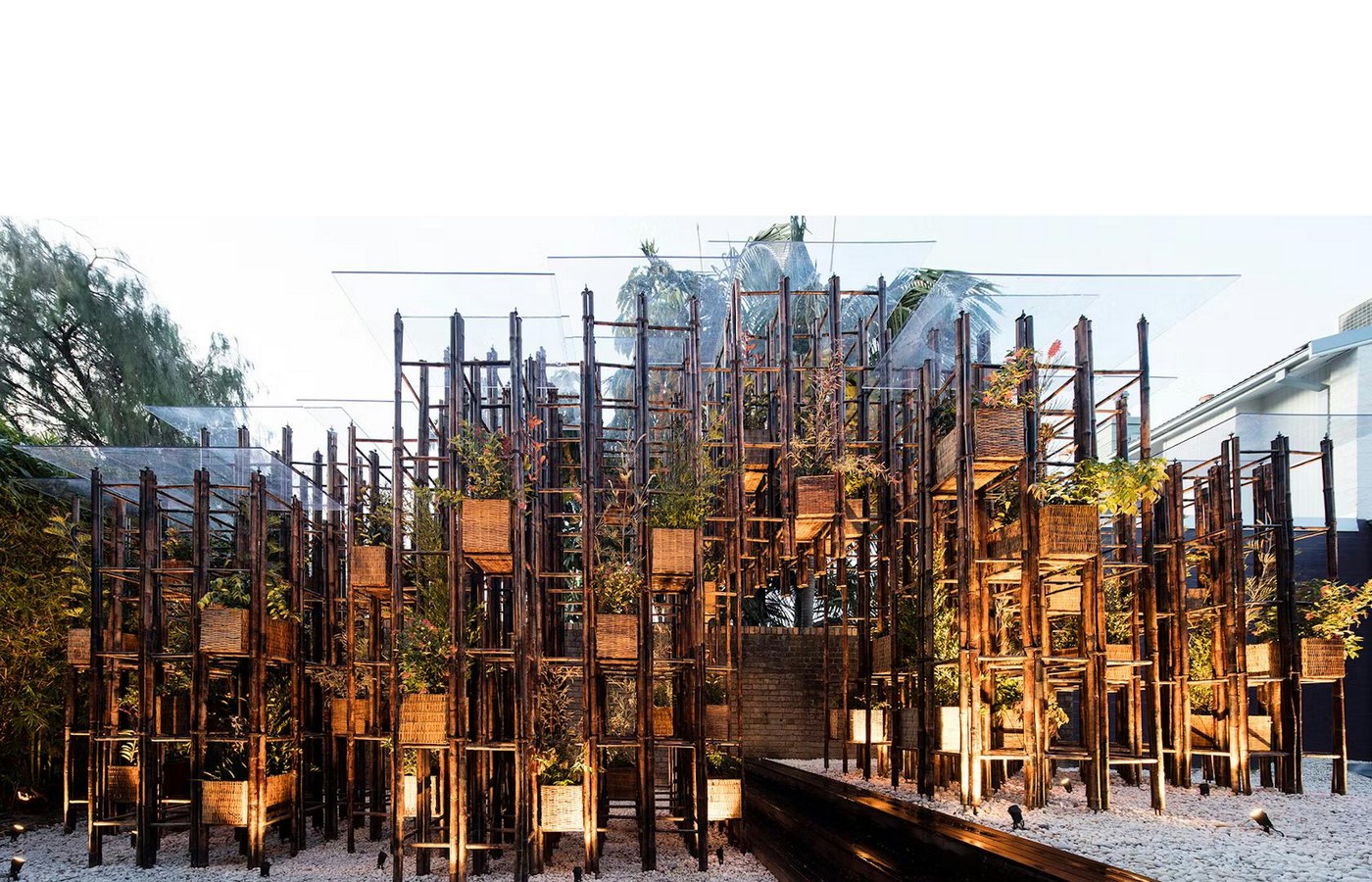
Traditional methods from China and Japan continue to be the benchmark for long-lasting bamboo structures. The rooms and gable roofs of traditional Japanese rectilinear architecture matched the size of tatami mats. Chinese bridges have been around since the 10th century AD in some cases. As late as the 17th century, hundreds of households were housed in floating villages, which were bamboo platforms with groups of cottages.
Bamboo has long been a staple building material in tropical climates. However, it has typically been employed for low-cost shacks, stalls, fences, scaffolding, and sunscreen. Because insects and fungi quickly consume the sugar- and starch-rich sap inside the canes, bamboo naturally degrades within two to three years if untreated. Drilling long steel rods through the canes’ centers and then applying chemicals that are fireproof and repellant are two crucial preparatory methods. This frequently entails using a soaking solution that contains borax salt powder. After that, the bamboo is cured for a few days to a few weeks.
Green School Bali, Architecture
In the heart of Bali, there is a private school called Green School, which was built with ecological sustainability in mind. The school’s whole construction is constructed from locally produced, processed bamboo. The Green School, a massive laboratory is situated on a sustainable campus that spans both sides of the Ayung River in Sibang Kaja, Bali. Over 70 substantial bamboo buildings can be found at the school, including a bridge that crosses the valley of the Ayung River to reach the main entrance. The campus is surrounded by a lush jungle with indigenous flora and trees growing alongside organic, sustainably run gardens. The campus is home to a wide range of aesthetically significant buildings, from enormous multi-story social gathering spaces to much smaller classrooms. The region’s responsibly grown bamboo is used in inventive and creative ways to display its architectural possibilities. Solar panels, a hydro-driven vortex generator, a bamboo sawdust hot water and cooking system, and other renewable energy sources are used to power the campus.
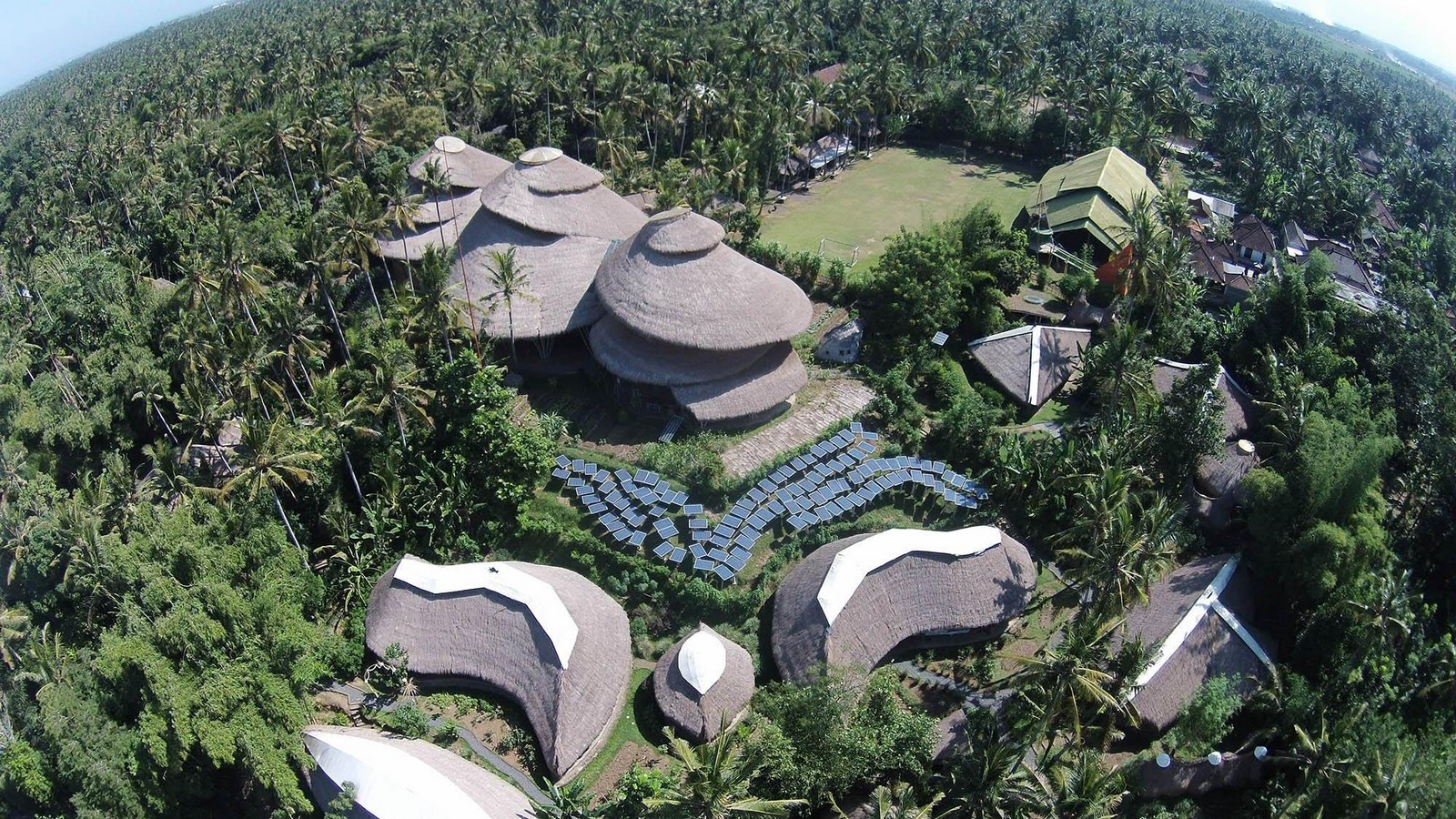
The Arc
The Arc is the newest structure on the grounds of Bali, Indonesia’s famed Green School. The Green School’s distinctive bamboo roof, which has no walls and mimics waves or billowing sails, functions as a gymnasium and a wellness area. The rooftop has three peaks that merge into one another, and its edges simultaneously flare and bend. It is made from a series of intersecting bamboo arches that are 14 meters tall and span 19 meters. The arches are joined by anticlastic gridshells, which get their strength through twisting in two different directions. Tensile membranes similar to the tendons and muscles between the ribs stabilize the Arc, which functions like the ribs of a mammal’s chest. These incredibly strong tiny tendons carry stresses from one bone to another biologically. Bamboo splits in The Arc transfer stresses from one arch to another. It is a fascinating instance of using biomimicry in architecture. These gridshell fields give the area a whimsical, intimate, and lovely quality by appearing to drape across the crevices between the incredibly thin arches that soar overhead. Despite appearing to hang from the arches, the gridshells support them. The Arc’s paradoxical use of geometry creates an equilibrium in the structure, which results in a much-reduced demand for structural material. Additionally, it means a never-before-seen inner volume with an absurdly thin construction and no distracting trusses. The amalgamation of traditional workmanship and cutting-edge building methods is truly beautiful. The artisans used a three-dimensional coordinate system to ensure maximum accuracy, making it possible to reliably adhere to the curvatures of the gridshells to certain engineering specifications.
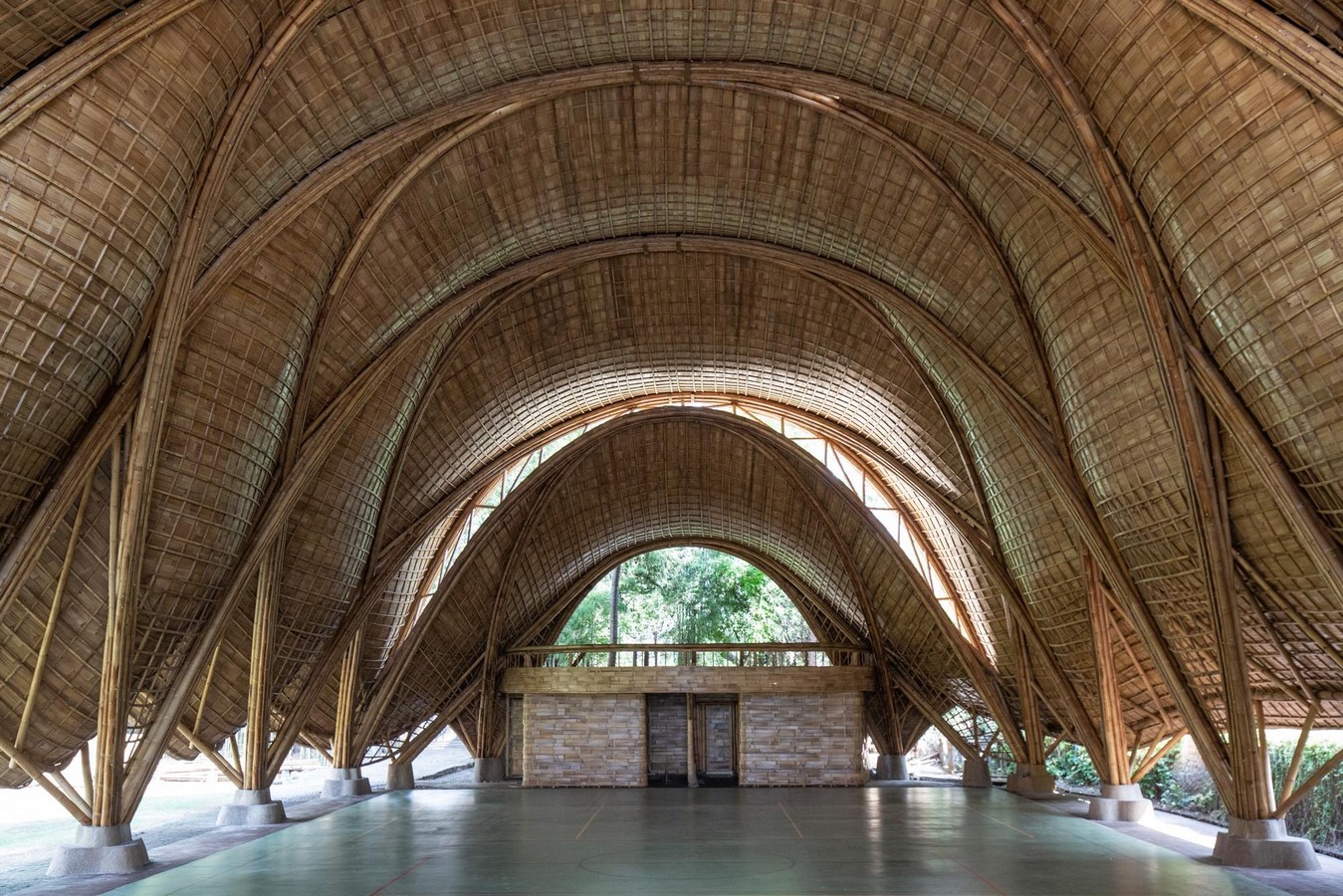
The Heart of Green School
The ‘heart of green school’ design is centered around three linearly situated nodes from which all other curricular elements radiate in a spiraling organization. Originating at each anchor point, intertwining bamboo light columns rise to the top of the structure, framing a skylight with intricately crafted mullions in a wooden ring. From each major vertical support, a flexible helical thatch roof sprouts, corkscrewing to let light into every room and protecting the open-air interior with deep overhangs. Three stories with flexible rooms and varying levels of privacy are accessible through three main steps to accommodate the varied activities. Harps are attached on some of the wood columns, turning them into musical instruments that anyone might play, creating a connected experience throughout the entire architecture that immediately resonates with its educational principles.
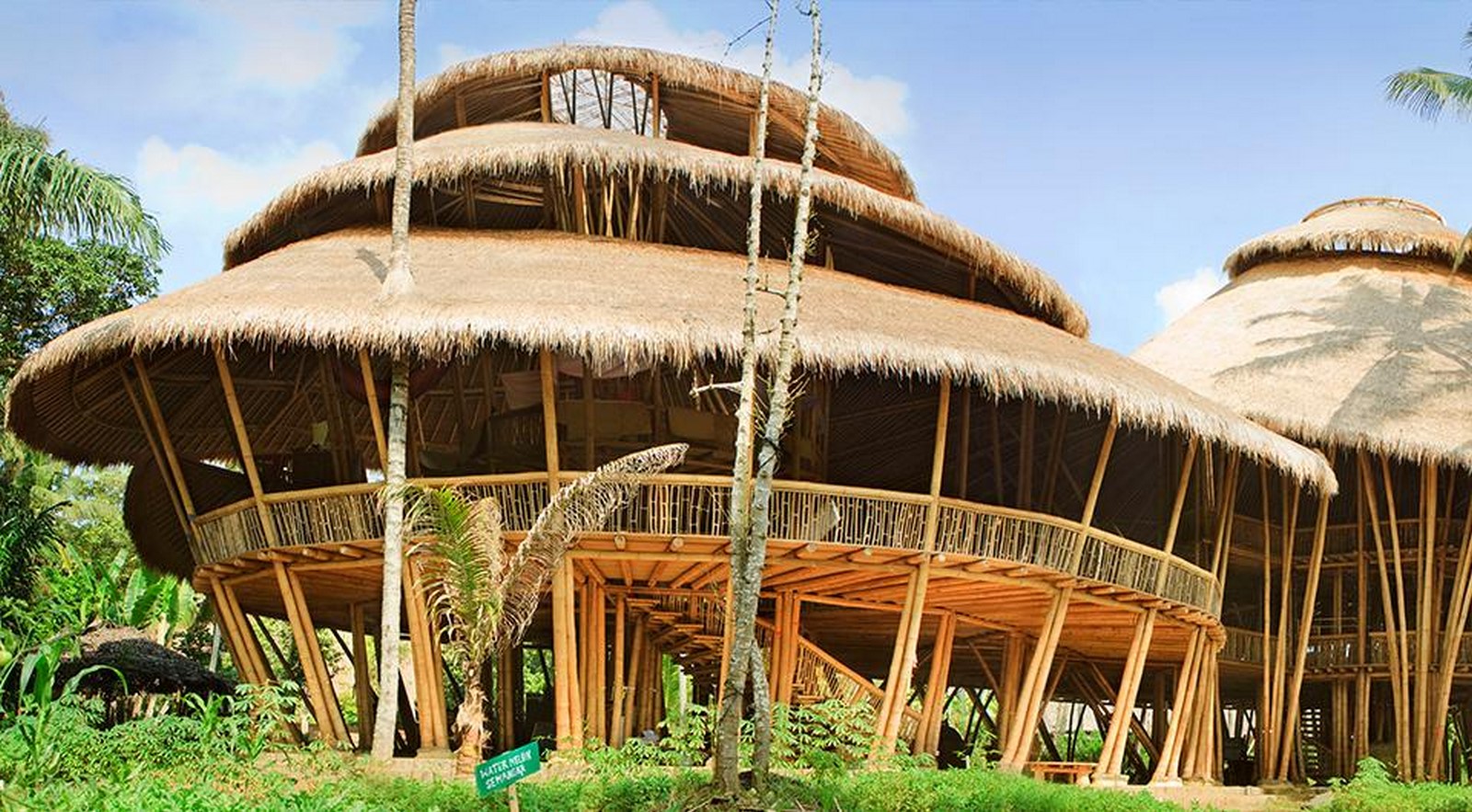
The Mepantigan Event Center
The Mepantigan Event Center provides a venue for community gatherings for events including festivals and family reunions. The large oval footprint is encircled by natural stones on a compacted earth surface and is enclosed by three layers of seating in an arena-like design. A bamboo framework that rises from the ground supports a large canopy and is divided longitudinally by a skylight for adequate lighting.
The Kindergarten Classroom
The plan of this block is a circular shape with a central tower. The focal point of the structure is its roof, which is lowered to between 1 and 1.5 meters in height all the way around to reduce distractions during school hours. The middle skylight, which allows light from above to pass through, makes this process possible. The building is supported by a central column that has a skylight in the centre and resembles a bamboo basket. The bamboo arch that serves as the classroom’s entryway to the outer world serves as the building’s “door,” which has no walls. Several playstations and various pieces of furniture that may be configured for different activities qualify the open space underneath the roof. Due to its high usage, the building is set on a surface made up of a mixture of mud and concrete. Sand has been spread on the exterior surfaces to ensure the game can be played freely and safely.
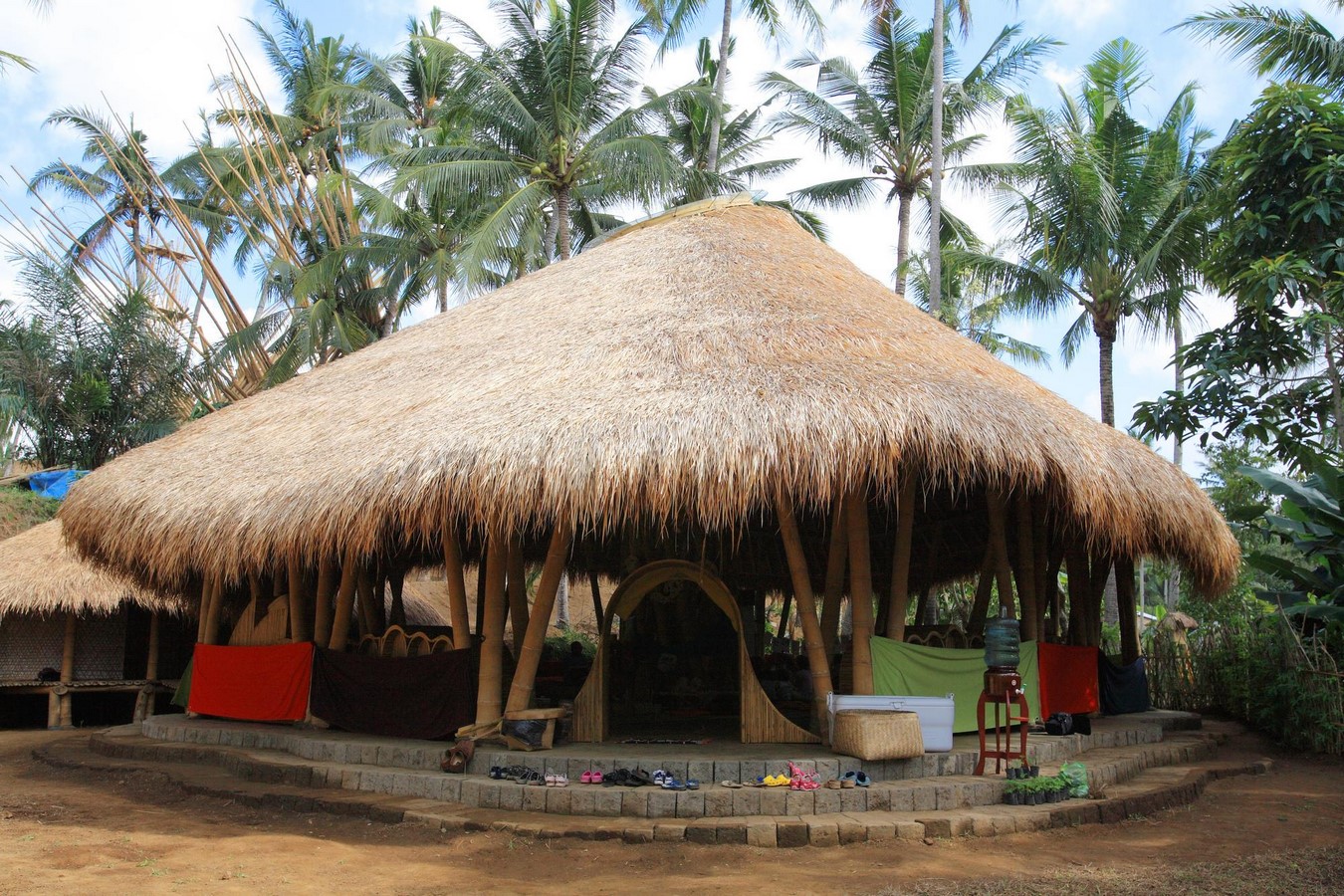
Turtle classroom
The Turtle Classroom at the Green School in Bali is a compact one-room building that serves as the music classroom’s twin. The roof’s edges ripple across the interior area as they rise and fall. The building’s framework is made up of several radial loops and arches that were bent using the rebreb technique and connected by bamboo rope. The different pieces are fastened with pins or bolts to make the construction rigid, and the roof has a lovely curve. A fabric skylight is located in the middle of the roof, providing natural light during the day and allowing hot air to escape from the top of the interior space.

References
Bamboo Pure. (n.d.). Turtle Classroom at Green School. [online] Available at: https://bamboopurebali.com/project/turtle-classroom-at-green-school/.
Jackson, D. (2019). Bamboo architecture: Bali’s Green School inspires a global renaissance. [online] The Conversation. Available at: https://theconversation.com/bamboo-architecture-balis-green-school-inspires-a-global-renaissance-121248
M, K.H. (2023). Bamboo as Building Material: Sustainable & Cost-Effective. [online] The NoBroker Times. Available at: https://www.nobroker.in/blog/bamboo-as-a-building-material/
Archello. (n.d.). The Arc at Green School Bali | Ibuku Bamboo Architecture and Design. [online] Available at: https://archello.com/project/the-arc-at-green-school-bali.
ArchDaily. (2021). The Arc at Green School / IBUKU. [online] Available at: https://www.archdaily.com/964059/the-arc-at-green-school-ibuku.
ArchDaily. (2021). Kindergarten Classroom at Green School / IBUKU. [online] Available at: https://www.archdaily.com/886235/kindergarten-classroom-at-green-school-ibuku?ad_medium=widget&ad_name=more-from-office-article-show
designboom | architecture & design magazine. (2012). PT bamboo pure: green school, bali. [online] Available at: https://www.designboom.com/architecture/pt-bamboo-pure-green-school-bali/
ArchDaily (2010). The Green School / IBUKU. [online] ArchDaily. Available at: https://www.archdaily.com/81585/the-green-school-pt-bambu.
Photography, E.S. published C. from T.R. – (2021). Ibuku’s The Arc at Green School in Bali raises the bamboo roof. [online] wallpaper.com. Available at: https://www.wallpaper.com/architecture/the-arc-at-green-school-bamboo-roof-ibuku-bali-indonesia.
ArchDaily. (2021). The Arc at Green School / IBUKU. [online] Available at: https://www.archdaily.com/964059/the-arc-at-green-school-ibuku.
Borowski , P.F., Patuk, I. and Bandala, E.R. (2022). Innovative Industrial Use of Bamboo as Key ‘Green’ Material. Sustainability. doi:https://doi.org/10.3390/su14041955.


















